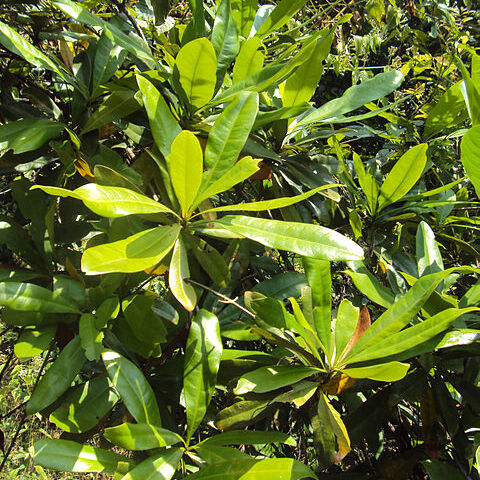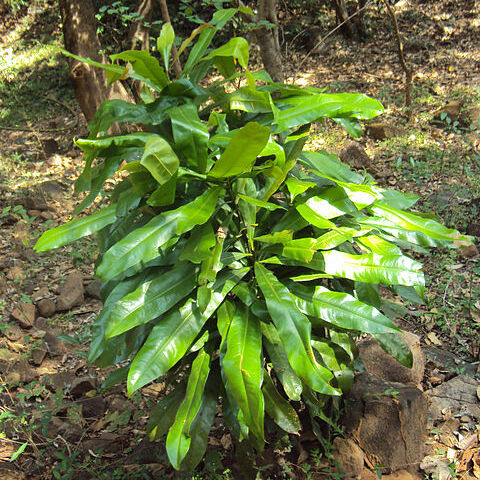Lianas or scandent shrubs; branches sympodial, provided with a series of circinate woody hooks in one plane. Leaves alternate, entire, simple, glabrous, coriaceous, some generally larger scattered on the main shoots, others often smaller crowded in rosettes on flowering shoots, all cuneiform, penninerved, reticulately veined, minutely pitted on both surfaces, each pit with a peltate small hair secreting a wax-like substance; petiole articulated, often leaving a saddle-shaped scar on the twigs. Stipules small, very caducous. Inflorescences axillary or pseudo-terminal, dichotomously branched or spike-like, sometimes provided with hooks; pedicels articulated. Flowers hermaphrodite, actinomorphic, 5-merous, very caducous. Calyx-tube short, adnate to the base of the ovary; sepals imbricate, ± unequal, soon accrescent. Petals free, contorted or imbricate. Stamens mostly 10, rarely 5 or to 15, perigynous, in 1–2 cycles, alternately unequal; filaments short, ± united at the base, with broadened base; anthers basifixed, generally introrse, 2-thecous, opening lengthwise. Ovary for the greater part inferior, tricarpellate, 1-locular, protruding into an enlarging nipple-shaped elongation bearing 3 articulated erect free or united styles with 3 stigmas; ovule 1, basal, hemianatropous, with 2 integuments. Fruit a non-dehiscent dry nut, 1-seeded, crowned by the generally unequal and wing-like enlarged sepals. Seeds with a thin testa intruding between the cerebral-like folds of the endosperm
Calyx-tube at first short, at length adnate to the base of the ovary, with imbricate lobes; tube adnate to the fruit, with spreading wing-like unequal lobes
Flowers hermaphrodite, actmomorphic, small, soon falling off, in terminal panicles, the branches of which are recurved
Leaves alternate, simple, entire, leathery; indumentum absent; stipules inconspicuous or caducous
Stamens perigynous, 5 or 10; anther-cells slightly unequal, with a shortly produced connective
Fruit turbinate, surrounded by the wing-like calyx-lobes, with a leathery indehiscent pericarp
Seed subglobose; testa intruding between the folds of the embryo; cotyledons strikingly folded
Ovary 1-celled; ovule solitary; style thick and fleshy, with 3 stigmas
Petals 5, unequal, contorted, slightly connate at the base
Scandent shrubs with hook-like branchlets


